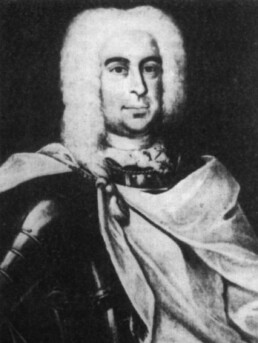Who was Karol Erdmann Henckel von Donnersmarck?
Karol Erdmann Henckel von Donnersmarck was the second and youngest son of Count Karol Maksymilian and his second wife, Helena Jadwiga, Countess von Roedern. Initially, he lived in the shadow of his brother Leon Maksymilian , who, as an elder, took over the family property in 1716.
Karol Erdmann Henckel von Donnersmarck was the second and youngest son of Count Karol Maksymilian and his second wife, Helena Jadwiga, Countess von Roedern. Initially, he lived in the shadow of his brother Leon Maksymilian , who, as an elder, took over the family property in 1716.
Eleven years later – on August 5, 1727 – the brothers made a deal. Leon Maksymilian for the sum of 20 thousand. guilders, he relinquished to Karol Erdmann all inherited property – ie the Tarnowskie Góry – Świerklaniecki fideicomis – together with power over Tarnowskie Góry and the surrounding lands. It was not a small amount if you take into account that the year-round proceeds to the municipal treasury of Tarnowskie Góry were only PLN 4,000–6,000. guilders.
Karol Erdmann was a tolerant man. The situation forced him to a certain extent. The Protestant himself was the subject of the Catholic ruler – Habsburg – the emperor and king of Bohemia . In 1732, he agreed to settle a Jewish family in Tarnowskie Góry. However, she had to pay 1000 guilders for it. The count himself reported this fact to the Superior Office in Wrocław .
An event in the life of the count and the city was the visit in 1734 of the Elector of Saxony , Frederick August II Wettin , who was on his way to Krakow for his royal coronation. He reigned later in the Republic of Poland under the name of Augustus III .
The great change was the transition of Silesia and Tarnowskie Góry under the rule of the King of Prussia , Frederick II the Great . On November 20, 1742 count Charles Erdmann sent a letter to Hohenzollern asking for permission to celebrate evangelical services, build a house of prayer and support the clergyman (with an income of 200 florins). Frederick’s quick reply was December 8 – the king agreed to Henckel’s requests. Knowing the realities of those journeys, it can be assumed that the count was welcomed at the royal court.
On Henckel’s initiative, the preacher Samuel Ludwik Sasadius was brought to Tarnowskie Góry . It was he who consecrated on December 25, 1742 the congregation house in the market square in Tarnowskie Góry.
During the reign of Charles Erdmann, the inhabitants of Tarnowskie Góry and tragedies. In 1732 and 1737, during the epidemics of plague and typhus, more than 600 inhabitants of the city died. Tarnowskie Góry was also plagued by fires in 1734, 1742 and 1746. The town of miners also had reasons to be proud. It is here that the authorities of the Bytom poviat established in 1742 found their seat . In 1754, in the building at ul. 4 Gliwicka Street, a Protestant school was opened, which became one of the most significant in those days.
Karol Erdmann ruled the city and the surrounding area for over thirty years.
